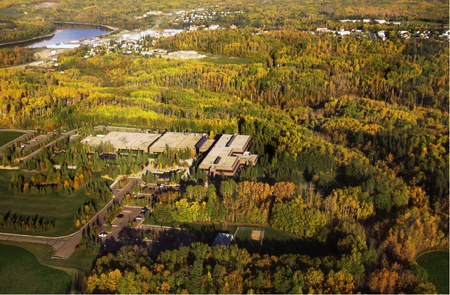Case study
Home Case study OER projects Contact AU OER family
Athabasca University is an open university with an open admissions policy and is dedicated to removing the educational, geographical, financial, social, cultural and other barriers that often limit access to learning. Do you see OER as a natural extension of your organisation's philosophy of open learning?
Yes, Athabasca University (AU) is Canada's Open University and this openness has many dimensions. OERs are important for us as part of this open learning mandate. We are committed to opening access and breaking barriers to education and the contribution of OERs and the use and reuse of them is beginning to play a significant role in our university's development.
Many single-mode distance education providers will argue that their course materials create competitive advantage for increased student recruitment. As an international leader in online and distance education how do you see OER contributing to Athabasca's continued success and growth? How does Athabasca University benefit from the OER approach?
At AU, we are unique in Canada in that all our courses belong to the university rather than the contributing professor. This is because teams of instructional designers, editors and web specialists work together as a team with the professor (the subject matter expert) in the creation of courses. Open content licensing provides the vehicle for tertiary education institutions to facilitate collaboration without compromising intellectual property rights of individuals and / or organisations given the freedom to reuse and adapt courses for their own purposes. Our teams are now trained to search the web for relevant good quality OERs for insertion in our courses as a first step. Assembling courses from available OERs rather than creating content from scratch is a more viable economic model, and it allows us to keep up to date in a more efficient manner. OER benefits by sharing in the OER community. As our OERs become widely used, our reputation is improved and at the same time our courses are improved with the use the shared materials.
Rory, you have published a number of editorials suggesting that OER is a mechanism for eliminating government waste and helping the environment at the same time. What do you mean and how does OER reduce waste of tax payer dollars?

Athabasca University is a world leader being the first University Press to publish all its materials under open access licenses. Based on your experience, what are the tangible benefits your University has achieved by this move?

Athabasca University leads by example and has a unique process requirement for new course development whereby instructional designers are required to first search for published OERs before purchasing proprietary content or committing to in-house development. Can you tell us a little more about this initiative?
In 2009, AU received special funding from the province to conduct research to see what content that we use in our courses could be replaced by OERs. In 2010 we now have a programme to fully digitize our courses. As part of this we are continuing to replace proprietary content with OERs wherever possible. New copyright legislation in Canada would require us to destroy proprietary digital materials after each use and ensure that our students do the same. The made-in-the-USA digital lock provisions are also onerous. This is unacceptable to us, so in response we are reducing our dependence on this proprietary content to provide our faculty and students with the freedom to use and re-use their learning materials without hindrance.
Do you have examples of OER courses which have contributed to saving cost (and time) in getting courses to market?
OERs are mostly taken as lessons or modules, so they do not usually comprise the entire course. However, one notable example is the adaptation of a Green Information Technology graduate course, which was produced by an Australian university and made available as an OER in Moodle, the LMS that we use at AU. Our faculty member was able to take this course in its entirety and with only minor edits and the addition of some Canadian examples had a full course ready to go almost immediately. This course has been run successfully at AU and will be repeated again this Autumn.
From your desk, what do you see to be the main advantages of joining the OER Foundation in supporting you to achieve your organisational objectives?
The OER Foundation represents what the OER movement is all about. It provides a linking service for the sharing of OERs and a training service for those who wish to know how to use or reuse OERS, create, adapt and disseminate them.

